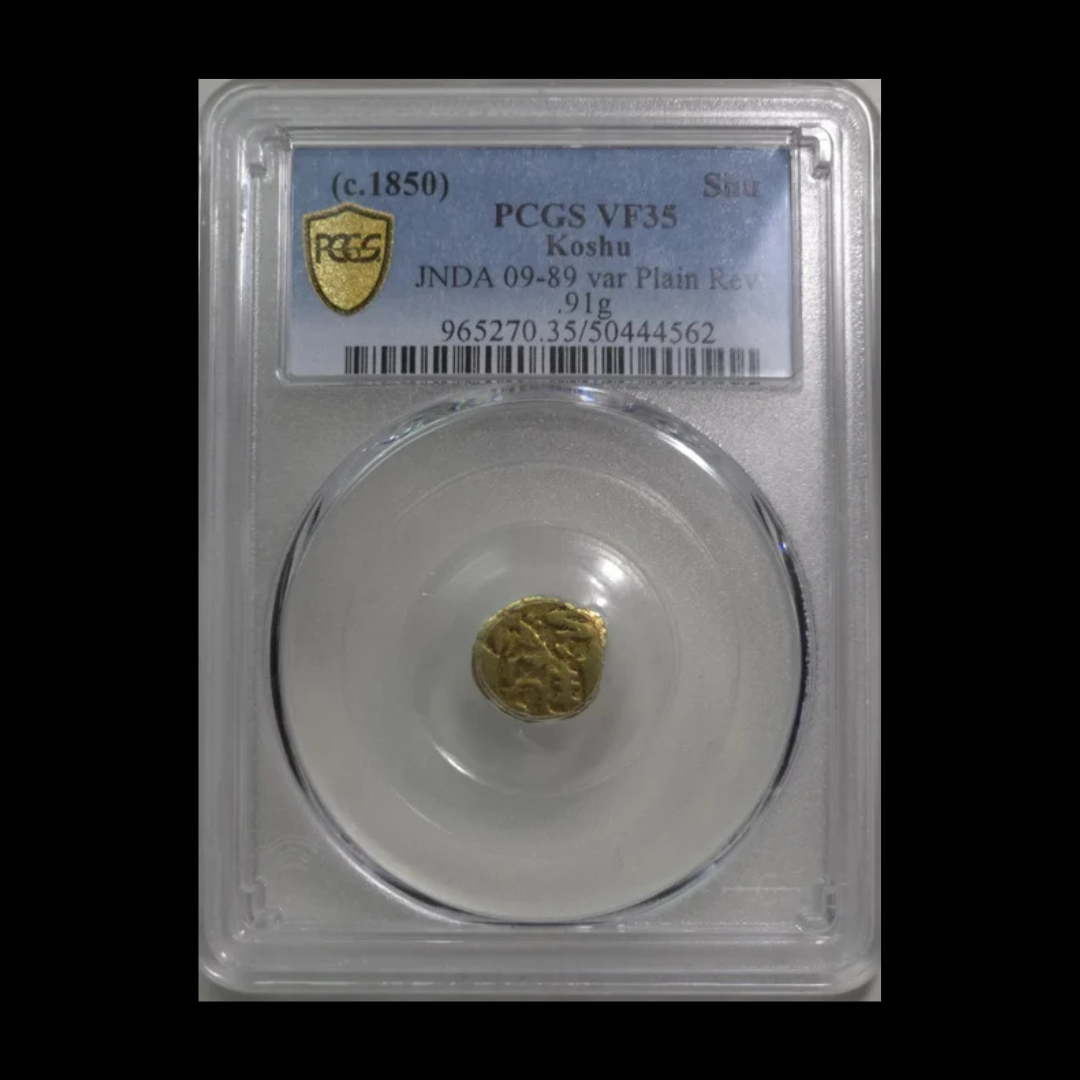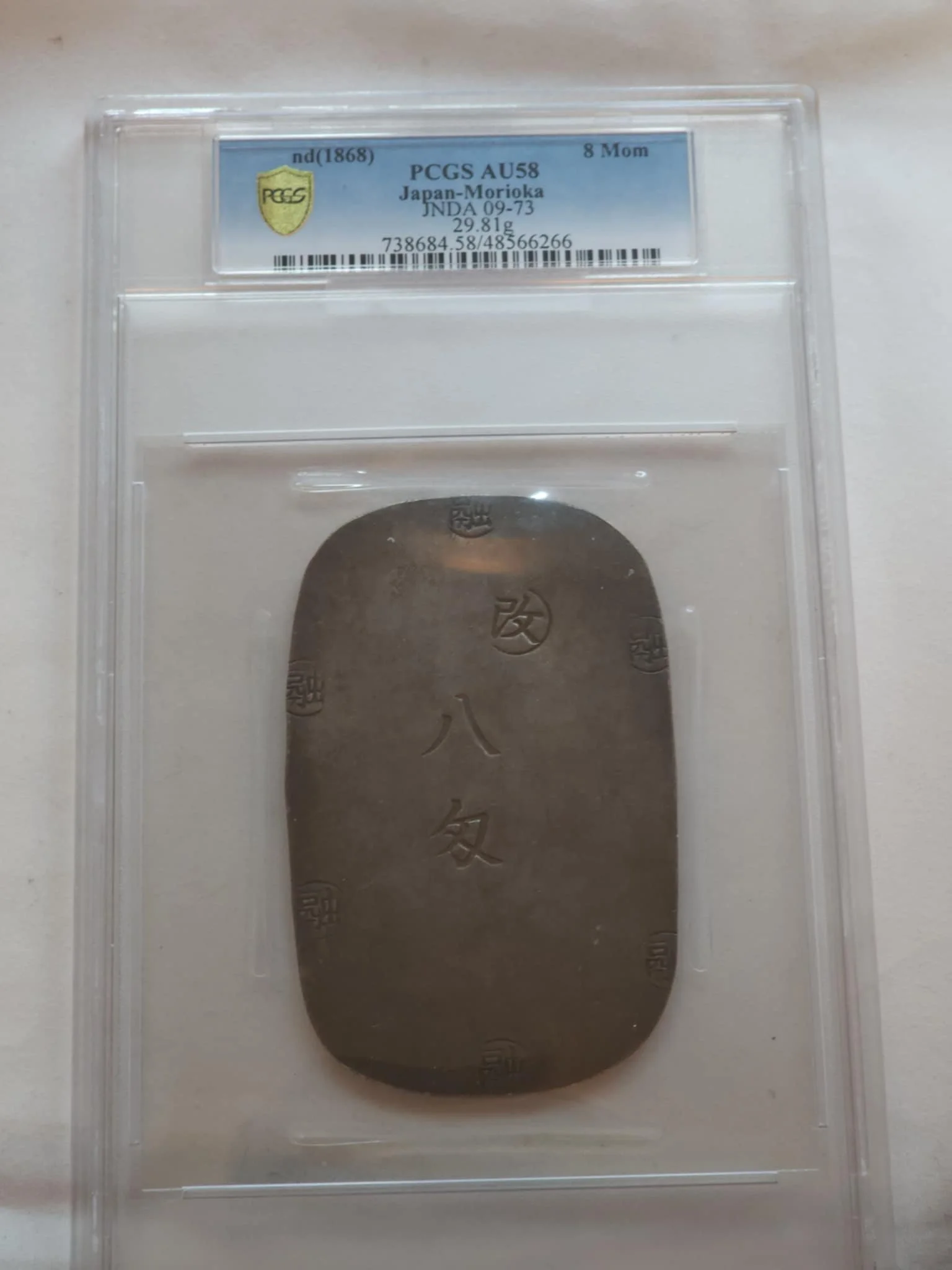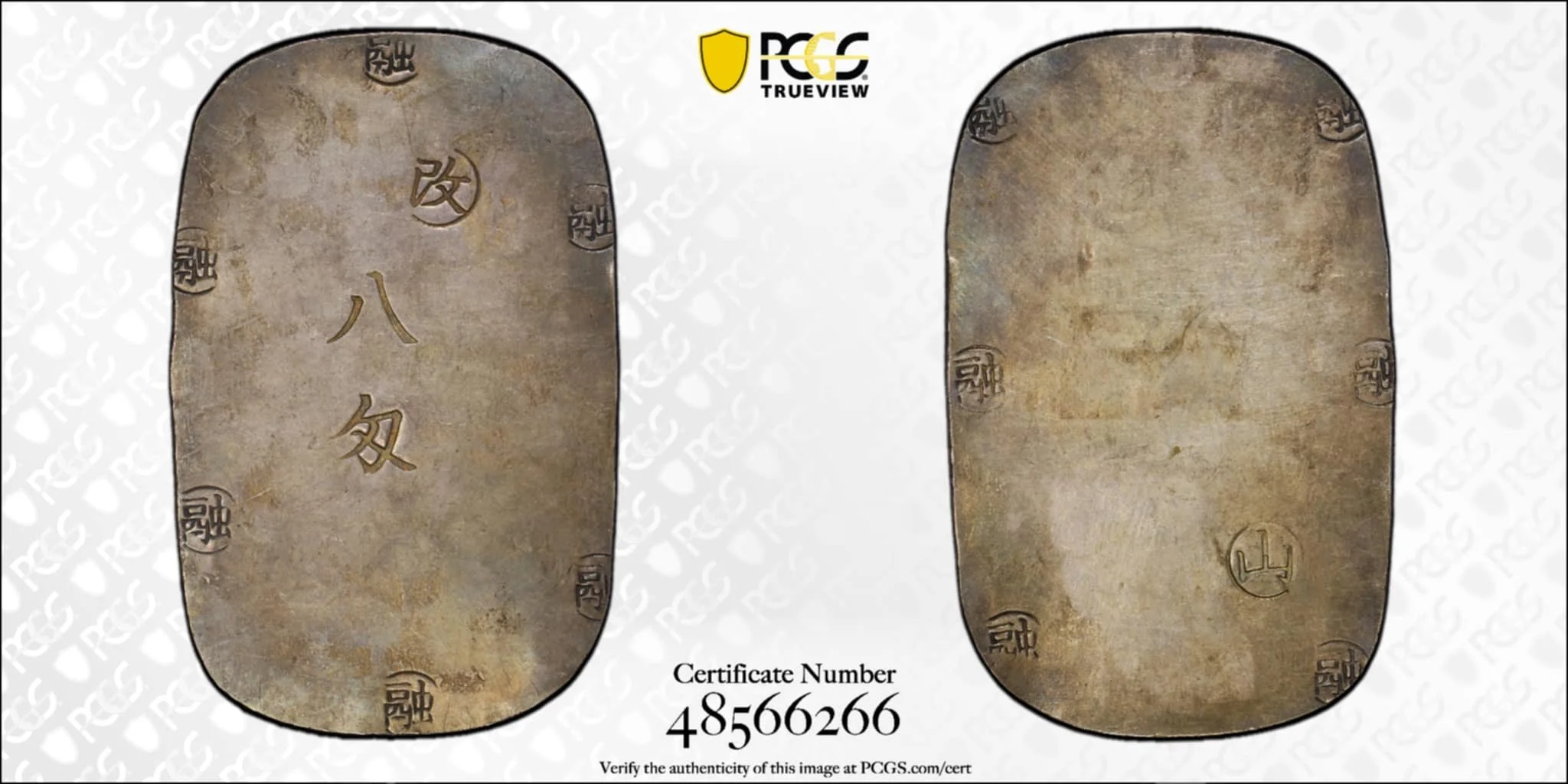 Image 1 of 5
Image 1 of 5

 Image 2 of 5
Image 2 of 5

 Image 3 of 5
Image 3 of 5

 Image 4 of 5
Image 4 of 5

 Image 5 of 5
Image 5 of 5






Japan — Kōshu Gold Shu, Edo Period (Tokugawa Shogunate), JNDA 09-89, PCGS VF35 (c. 200+ years old)
Japan – Kōshu Gold Shu (Edo Period, Tokugawa Shogunate)
JNDA 09-89 | PCGS VF35
Only Two Graded Higher at PCGS
A very scarce and historically significant small-denomination gold coin from the Tokugawa-era Kōshu mint, issued during Japan’s closed-country (sakoku) period. Struck in the traditional rectangular shu format from high-purity gold, this piece displays the distinctive hand-chiseled inscriptions and official kiri paulownia hallmark of the shogunate’s coinage authority.
The artistry is unmistakable — each character incised by hand, resulting in minor variations unique to every piece. This example, certified PCGS VF35, retains strong central detail and traces of original gold brilliance in protected areas, offering exceptional eye appeal for the grade.
The Kōshu gold issues circulated alongside larger ryō and bu pieces, forming part of a rigidly controlled monetary system that lasted for over two centuries. Survivors in collectible condition are scarce, and the PCGS census confirms only two examples graded higher, underscoring the rarity and desirability of this coin.
A choice acquisition for advanced collectors of Japanese coinage or world gold rarities, combining tangible gold value with the intangible allure of Japan’s Edo-period economy and craftsmanship.
Japan – Kōshu Gold Shu (Edo Period, Tokugawa Shogunate)
JNDA 09-89 | PCGS VF35
Only Two Graded Higher at PCGS
A very scarce and historically significant small-denomination gold coin from the Tokugawa-era Kōshu mint, issued during Japan’s closed-country (sakoku) period. Struck in the traditional rectangular shu format from high-purity gold, this piece displays the distinctive hand-chiseled inscriptions and official kiri paulownia hallmark of the shogunate’s coinage authority.
The artistry is unmistakable — each character incised by hand, resulting in minor variations unique to every piece. This example, certified PCGS VF35, retains strong central detail and traces of original gold brilliance in protected areas, offering exceptional eye appeal for the grade.
The Kōshu gold issues circulated alongside larger ryō and bu pieces, forming part of a rigidly controlled monetary system that lasted for over two centuries. Survivors in collectible condition are scarce, and the PCGS census confirms only two examples graded higher, underscoring the rarity and desirability of this coin.
A choice acquisition for advanced collectors of Japanese coinage or world gold rarities, combining tangible gold value with the intangible allure of Japan’s Edo-period economy and craftsmanship.

















